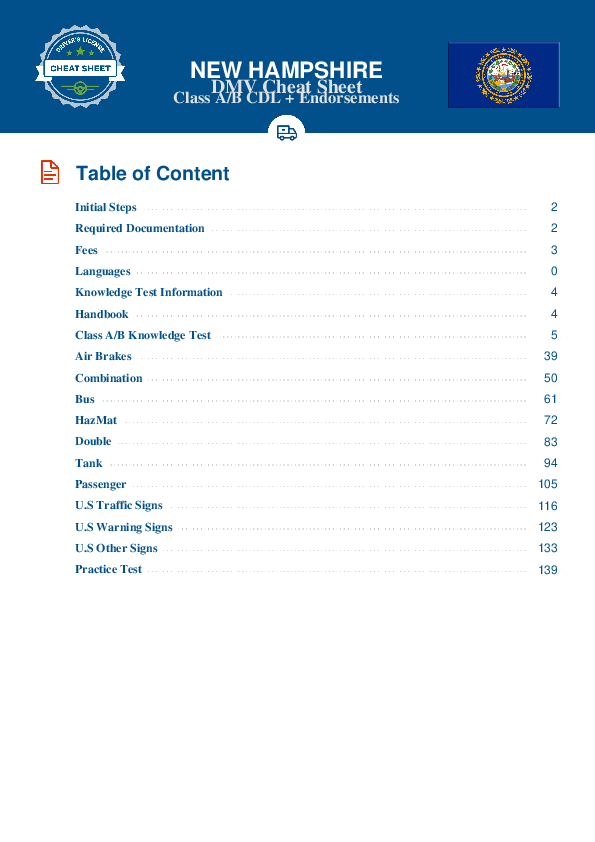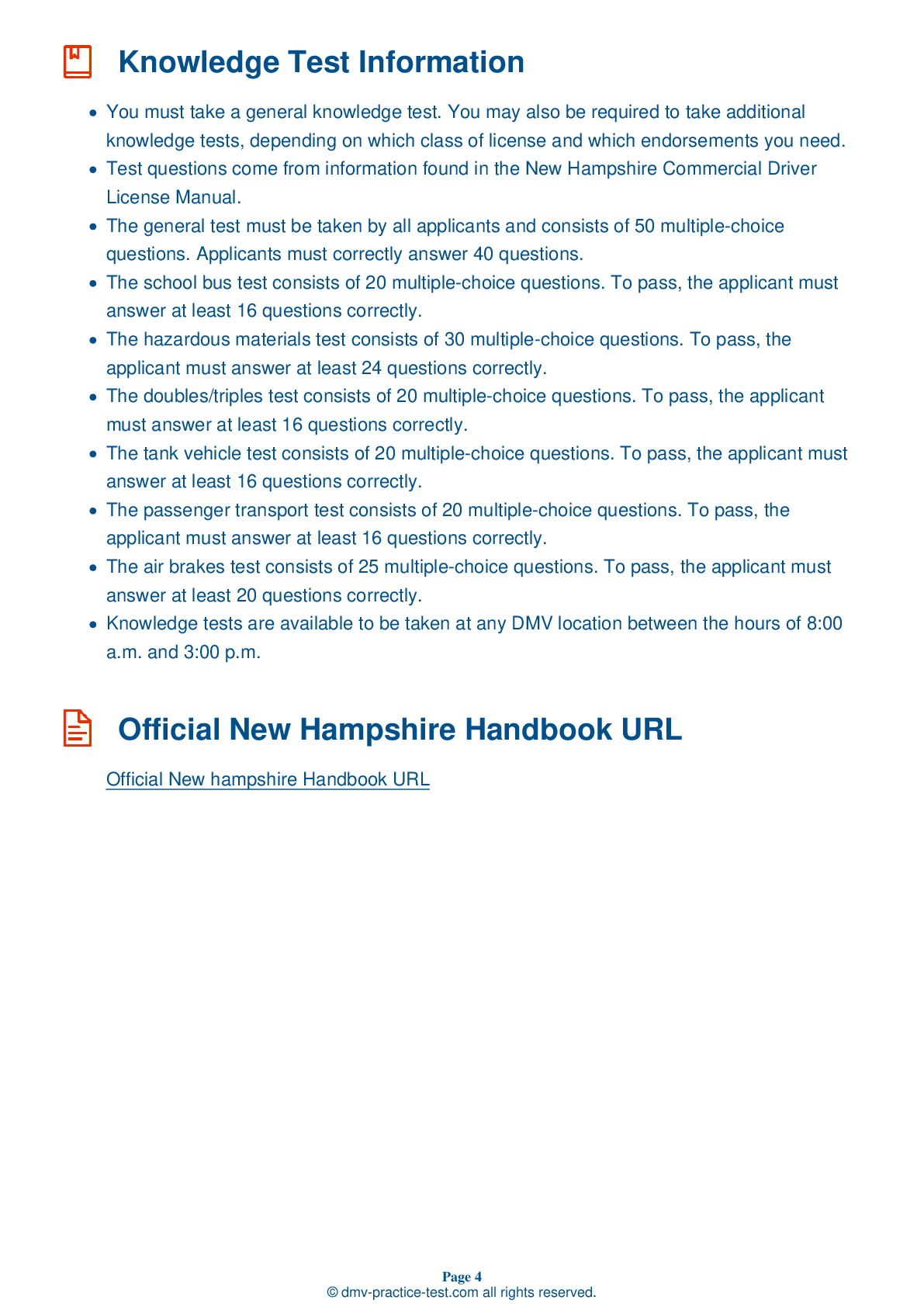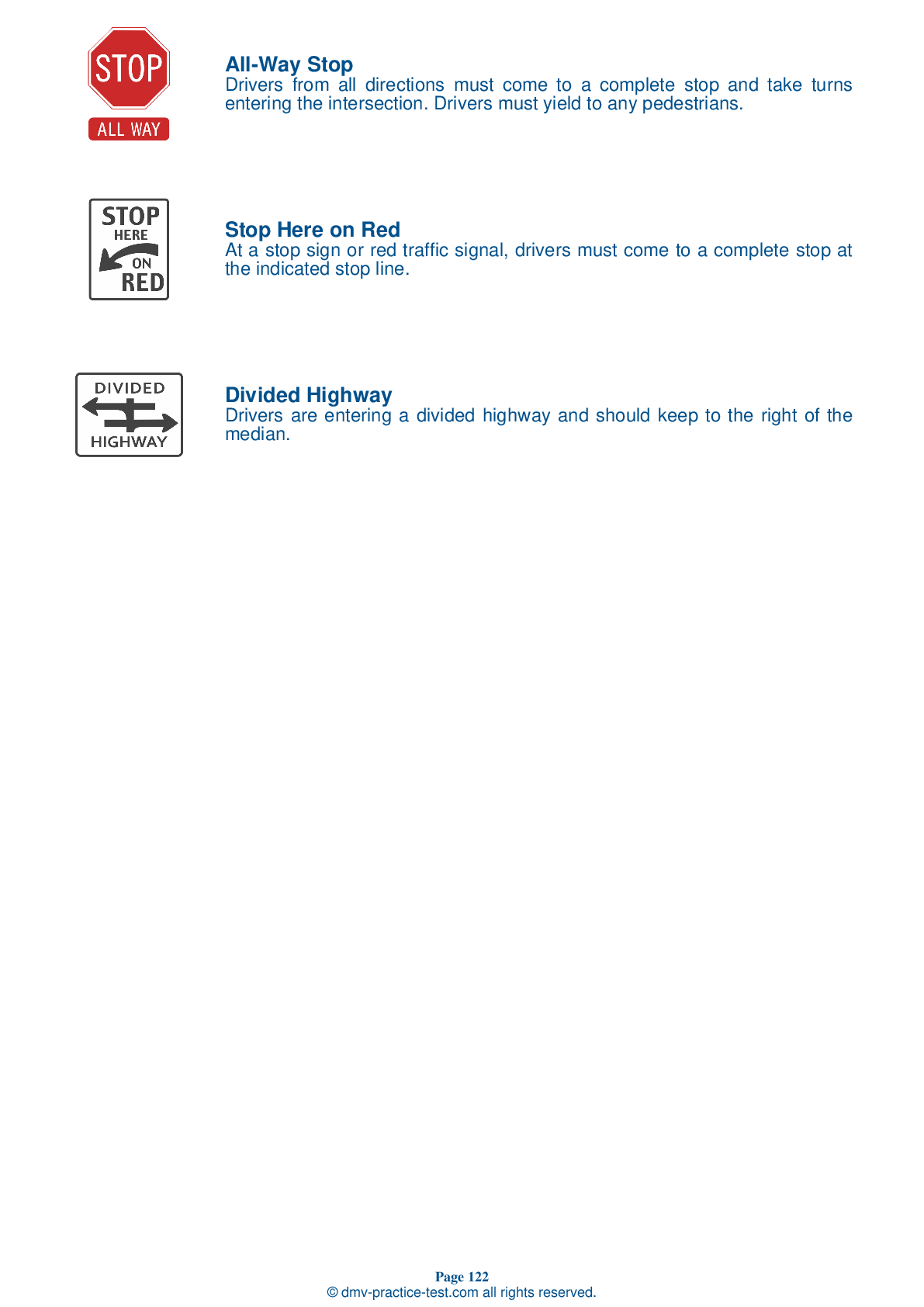Class A Driving Test | New Hampshire 2025 #1 Page 6 of 7
Train for FREE online with our New Hampshire class A license test. The official exam test consists of several obligatory parts, with all of them checking your knowledge of different blocks of road rules. If you need to obtain a NH CDL class A permit in 2025, practice as much as possible. Free sample tests published on our website will help you check and improve your knowledge and boost your grades. Please bear in mind that CDL class A requirements may vary from state to state.
36 . How much water needs to be on the surface of a road for a vehicle to hydroplane?
Hydroplaning is an effect in which a vehicle's tires lose traction with the surface of the road and instead glide along a layer of water. There does not have to be much water on the road for this to occur.
37 . If convicted of a traffic violation, you must inform your employer:
If you are convicted of any kind of traffic violation in any type of vehicle, you must notify your employer within 30 days of the incident. You must also inform your motor vehicle licensing agency within 30 days if the incident happened in another jurisdiction. This rule does not apply to parking infractions.
38 . Which of the following is not a warning sign of fatigue?
Possible warning signs of fatigue include trouble focusing, frequent blinking, or eyelids that feel heavy; repeated yawning; rubbing your eyes; daydreaming, or having wandering or disconnected thoughts; trouble remembering the last few miles; missing exits or traffic signs; trouble keeping your head up; drifting from your lane, following too closely, or hitting a rumble strip; and feeling restless or irritable.
39 . When transporting cargo, drivers must check the securement of the cargo every:
The securement of cargo must be checked before beginning a trip, within the first 50 miles of a trip, and then again every three hours or 150 miles.
40 . Backing with a trailer is dangerous because:
Backing up is always dangerous because it is impossible to see everything behind your vehicle. If you must drive in reverse, use a helper, if possible.
41 . What are placards?
Placards are diamond-shaped warning signs that are placed on the outside of vehicles carrying hazardous materials. Placards are used to identify the specific hazard classes of the cargo being carried.
42 . What is the minimum permitted size of a placard?
Hazardous materials must be diamond-shaped and a size of at least 10 ¾ square inches.
See the exact questions that will be on the 2025 New Hampshire DMV exam.
99.2% of people who use the cheat sheet pass the FIRST TIME
Lillian MCcranie explains how our CDL study guide was helpful in passing the exam and recommends it to everyone.
Cameron tells us how he purchased the CDL exam, and found it to be a useful tool which helped him pass the exam and find a job.



